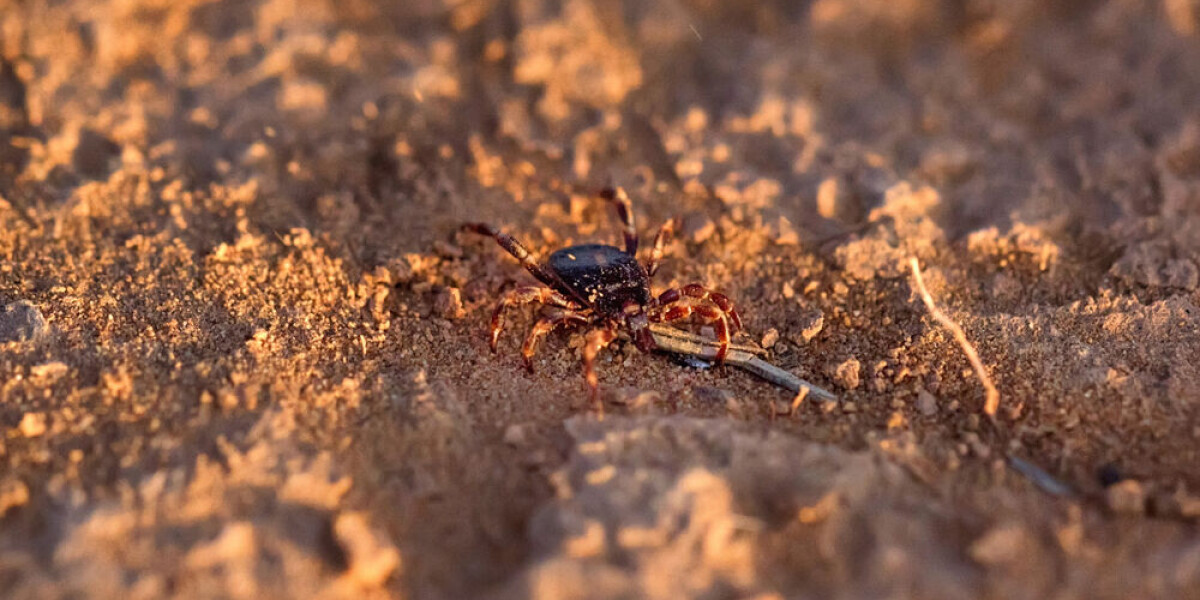Ticks carrying crimean-congo fever found in france for first time
Ticks carrying crimean-congo fever found in france for first time"
- Select a language for the TTS:
- UK English Female
- UK English Male
- US English Female
- US English Male
- Australian Female
- Australian Male
- Language selected: (auto detect) - EN
Play all audios:
NO HUMAN CASES HAVE YET BEEN DETECTED BUT HEALTH AUTHORITIES WARN THAT THE VIRUS COULD SPREAD DUE TO CLIMATE CHANGE. IT IS ALREADY IN SPAIN Ticks carrying Crimean-Congo fever have been
detected for the first time in France as concern grows about their possible spread. The virus, full name Crimean-Congo haemorrhagic fever (CCHF) - _fièvre hémorragique Crimée-Congo_ (FHCC)
in French - is transmitted by infected Hyalomma ticks. Ticks carrying the virus were detected on cattle in Pyrénées-Orientales in southern France in October. The presence of the virus has
been confirmed by health safety authority Anses (Agence nationale de sécurité sanitaire de l'alimentation, de l'environnement et du travail). There have not been any known human
cases in France to date, but the authority has warned that the virus could spread via ticks. CCHF can cause flu-like symptoms, with added digestive issues (but in some cases is
asymptomatic). However, it can be deadly if it leads to fatal haemorrhagic syndrome. In some countries, it has a fatality rate of up to 30-40%, Anses said. Any cases identified in France
must be reported to public health authorities so control measures can be put in place. HOW DOES CCHF SPREAD? It is spread via the bites of infected Hyalomma ticks. The Hyalomma is large,
around twice the size of a ‘standard’ tick. It can be recognised by its striped coloured legs. The virus can also be spread by contact with the blood or fluids of infected humans or animals.
In contrast, the virus is not transmitted by air or droplets, nor from eating products from an infected animal. Even eating raw dairy products from an infected animal does not transmit the
virus, the Pasteur Institute has said. IS THE SPREAD TO HUMANS LIKELY? An emergence in France is possible, the authority said, in a report in May. Coordinator of the report, Elsa Quillery,
warned that the risk of the fever appearing in humans in France is “all the more likely as the geographical extension of the ticks' implantation zone [is] favoured by climate change”.
This is because the ticks prefer drier, hotter weather; and drier scrubland. > Les changements climatiques impliquent l’apparition de nouveaux > risques. > L’implantation de tiques
Hyalomma, déjà présentes dans le sud > de la , rend possible l’apparition de nvelles maladies, comme la > fièvre hémorragique de Crimée-Congo. > Il est nécessaire d’anticiper ce
risque > pic.twitter.com/JufWFfnDu3 > > — Anses (@Anses_fr) June 1, 2023 Anses has advised that the Hyalomma tick is placed under surveillance. There is currently no surveillance
system for this kind of tick in France. It has called for more research into the tick, specifically in a bid to find a vaccine against the virus, said Dr Quillery. No such vaccine yet
exists. However the Hyalomma tick rarely bites humans and has no particular appetite for humans. Due to its size and preference for drier climates, the tick is also easier to spot and
remove, in comparison to other types of smaller ticks that hide in forested, long-grass areas (and spread diseases such as Lyme). READ MORE: LYME DISEASE IN FRANCE: OFFICIAL ADVICE ON HOW TO
AVOID A TICK BITE WHERE DOES CCHF COME FROM? The virus gets its name from the Crimean peninsula, in the Black Sea in eastern Europe - where it was first identified in 1944. It was then
linked to an identical virus from the DR Congo (formerly Zaire), in Central Africa. It travels mainly via migrating birds, which can bring the Hyalomma tick with them. It has been present on
the Mediterranean coast since 2015, earlier in Corsica. It is also present in Spain, where around a dozen human cases - including some deaths - have been reported since 2013, said Anses.
RELATED ARTICLES FRENCH HEALTH EXPERTS FEAR SPREAD OF POTENTIALLY DEADLY TICK MEDITERRANEAN TICK EXPANDS TERRITORY IN SOUTH OF FRANCE NUMBER OF PEOPLE BITTEN BY A TICK RISING IN FRANCE
Trending News
Six tips to keep your knees and other joints healthyFOR EXPERT TIPS TO HELP FEEL YOUR BEST, GET AARP’S MONTHLY HEALTH NEWSLETTER. 4. PERFECT YOUR POSTURE. “People often slo...
Javascript support required...
Wild Arizona | PBSSHARE THIS SHOW * Link Copied to Clipboard HOW TO WATCH WILD ARIZONA Wild Arizona is available to stream on pbs.org and ...
Free Guide- The ABCs of ADUsMemorial Day Sale! Join AARP for just $11 per year with a 5-year membership Join now and get a FREE gift. Expires 6/4 G...
En échelon and orthogonal fault ruptures of the 11 april 2012 great intraplate earthquakesABSTRACT The Indo-Australian plate is undergoing distributed internal deformation caused by the lateral transition along...
Latests News
Ticks carrying crimean-congo fever found in france for first timeNO HUMAN CASES HAVE YET BEEN DETECTED BUT HEALTH AUTHORITIES WARN THAT THE VIRUS COULD SPREAD DUE TO CLIMATE CHANGE. IT ...
Rare snowfall in sahara desert: see spectacular photos of ain sefra town covered in snow | 📸 latest photos, images & galleries | latestly. ComRare Snowfall in Sahara Desert: See Spectacular Photos of Ain Sefra Town Covered in Snow | 📸 Latest Photos, Images &...
Financial well-being rises with ageFinancial well-being typically increases with age, peaking in the mid-to-late 70s before starting to dip, according to a...
AARP Grandparents StudyExperiences of Modern Grandparents GRANDPARENTING’S STRONG TRADITION UNDERPINS EVOLUTION Grandparents represent a strong...
Late life | fragmented health care system | season 1 | episode 3Late Life Clip: Season 1 Episode 3 | 2m 43sVideo has Closed Captions | CC Our fragmented health care system addresses he...
